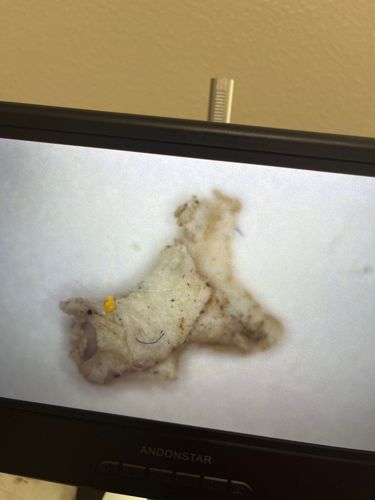Case-bearing Clothes Moth (Larva)
Scientific Name: Tinea pellionella
Order & Family: Lepidoptera, Tineidae
Size: Larvae typically measure 10-15 mm (0.4-0.6 inches) in length. The adult moths are small, about 6-10 mm (0.2-0.4 inches) in wingspan.

Natural Habitat
Indoors, particularly in dark, undisturbed areas such as closets, attics, and storage areas. They prefer environments with natural fibers.
Diet & Feeding
The larvae feed on keratin-containing materials, which include natural fibers like wool, fur, feathers, hair, silk, and felt. They can also consume lint, carpets, upholstered furniture, and stored animal products.
Behavior Patterns
The most distinctive behavior is the larvae's construction of a silken case, which they carry with them as they feed and grow. This case is camouflaged with bits of the material they are eating. They are typically found in dark, undisturbed places, avoiding light. Larvae are the destructive stage, while adult moths do not feed.
Risks & Benefits
Potential risks include significant damage to textiles, clothing, carpets, and other natural fiber items, leading to economic losses. They do not pose direct health risks to humans. There are no known benefits of these insects outside of their natural ecosystem (where they contribute to decomposition), and they are primarily considered pests in human environments.
Identified on: 9/5/2025